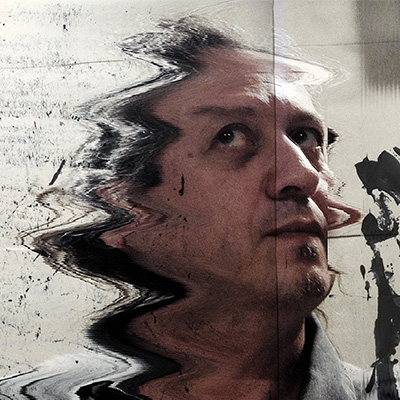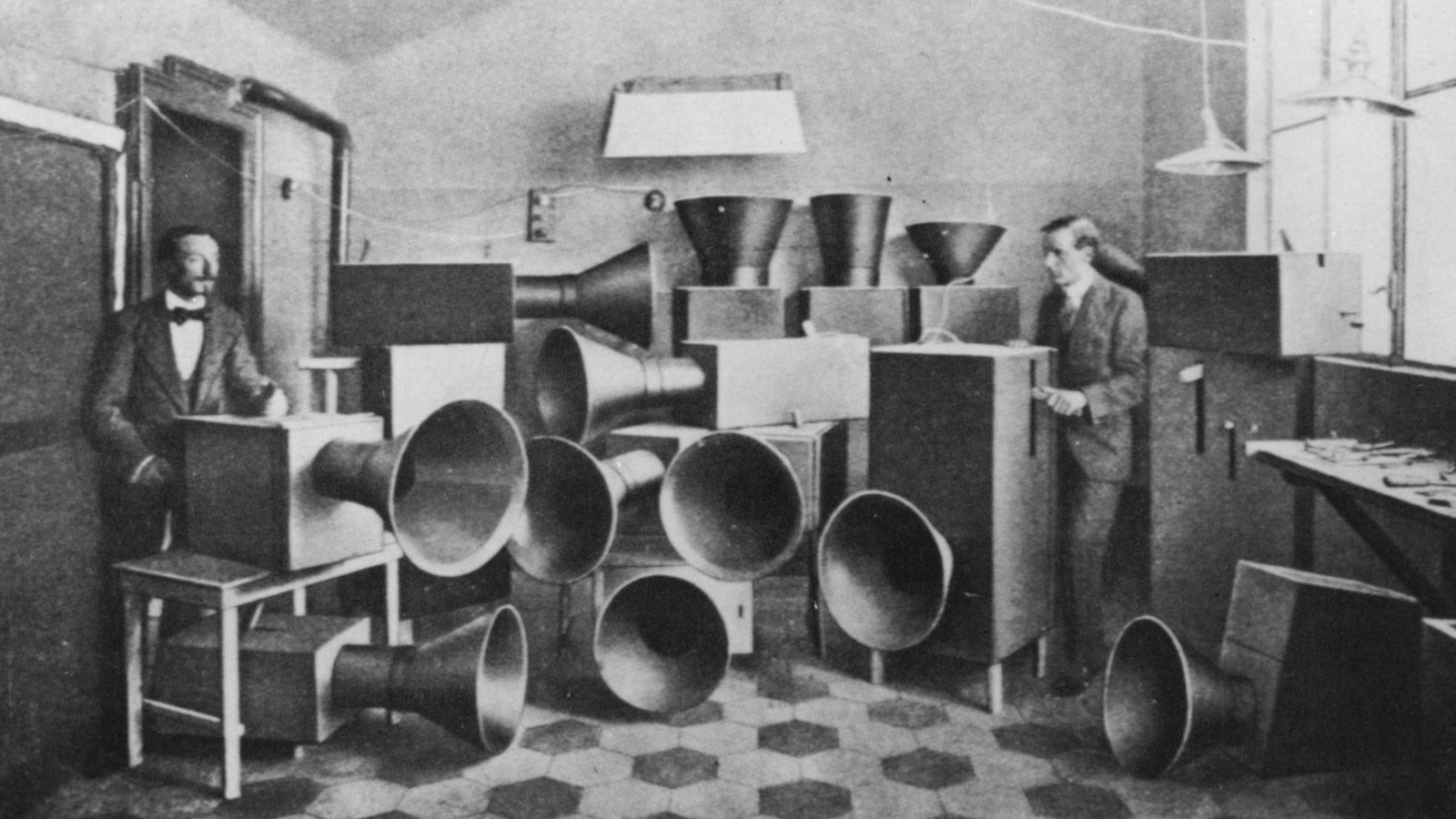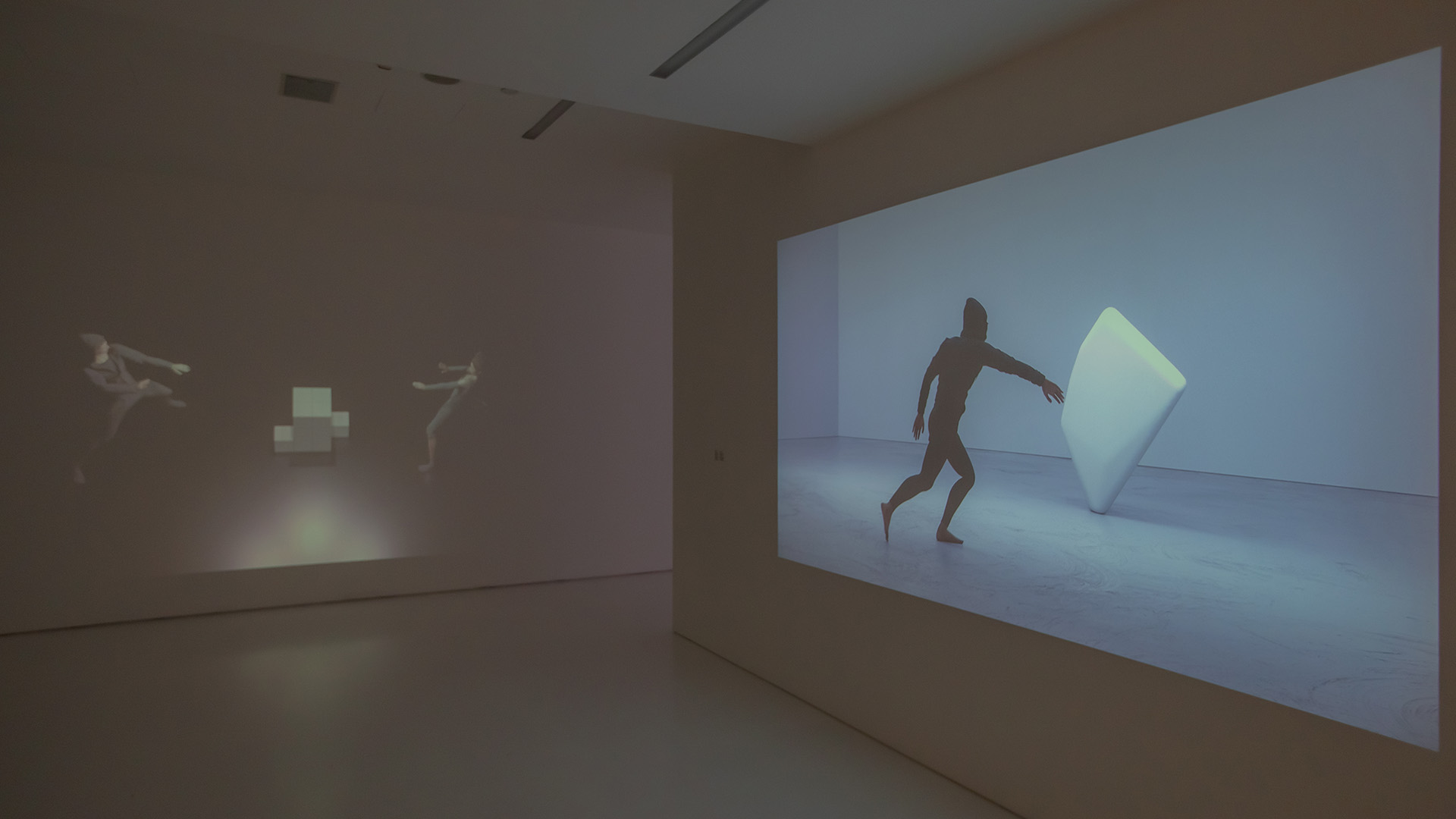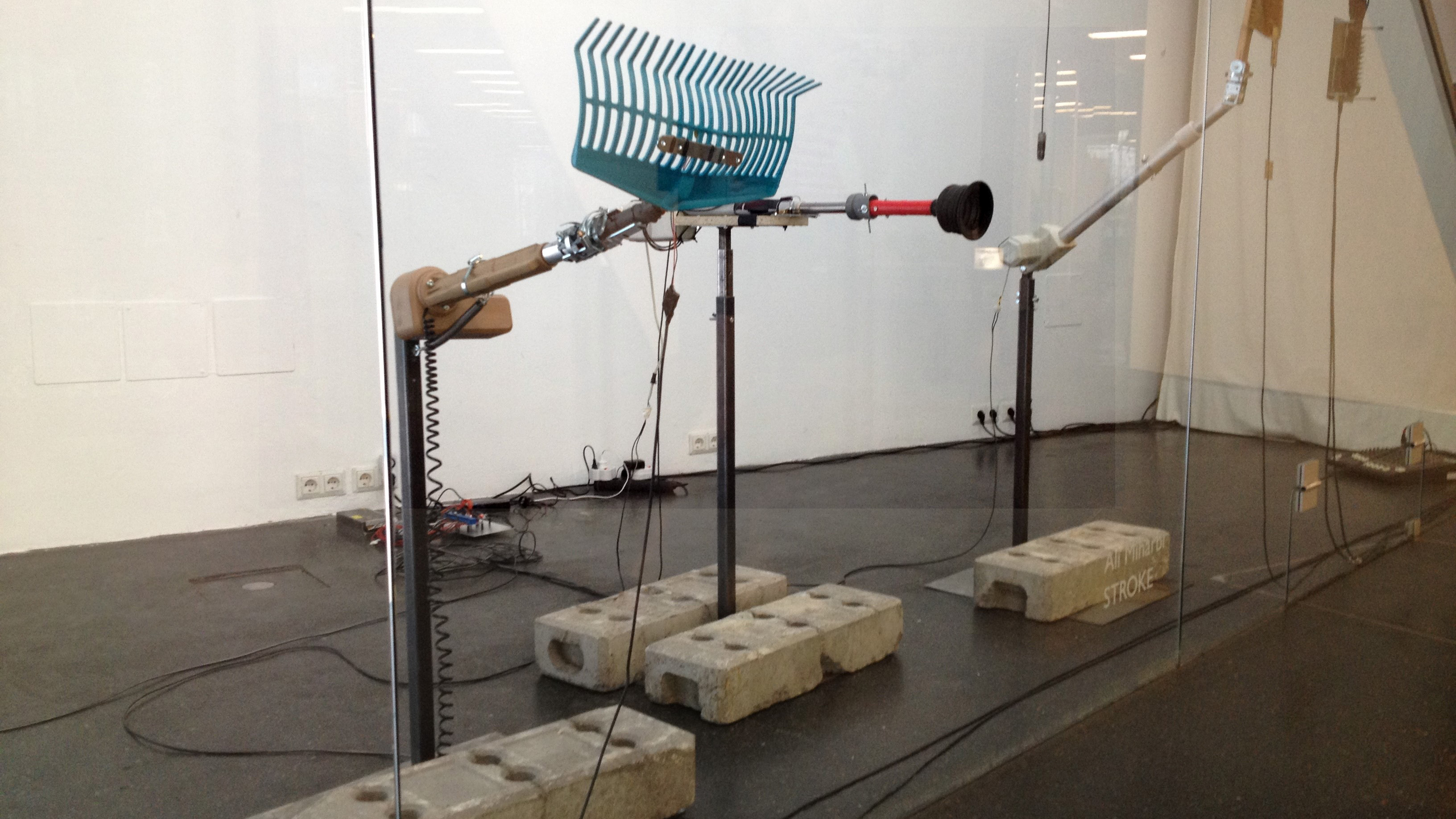Blog
Soundscapes: The Use of Sound in Art and The Perception of Space
25 October 2018 Thu
From Low-Frequency Sounds to Impossible Sounds | A Journey to the Third Platform
On Art, Culture, Sound, Noise, Resonance, and Music

FATİH AYDOĞDU
fatih@amberplatform.org
Borusan Contemporary's 2018-2019 fall season event series Thesis | Antithesis | Prostheses :::: Shifting Paradigms is curated by Fatih Aydoğdu and Ekmel Ertan, realized in collaboration with amberPlatform. Fatih Aydoğdu has written the below text on the foundational ideas for this series. The second part of this text will be published in November 2018. Stay tuned!
Today’s artistic practice is concerned with creating a unique, aesthetic (language) for communication, rather than producing permanent (museum) values, The deconstructive categories, tactical media, participatory interventions form new art and communication categories through talking about social change, asking analytical and structural questions on the social circumstances that define the daily agenda. Quick or direct communication tools propose modalities the use of different disciplines (aesthetical, pragmatical, or partly theoretical) on the same platform. The connotative level of the visual language, from the point of view of its contextual reference and positioning in different discursive meaning and association realms, denotes the point where already coded signs meet the depth of the semantic code of a culture and adopt additional, more active dimensions.
Rather than a factual (denotative) or realistic representation, it is meant by carriers of a specific language (identifying intricate correlations) that identify layered correlations - or a link between them - a property, a state, a value, or an extraction. These selected concepts also encompass social categories that shape themselves as meaning, action, and experiences within themselves—everything about everyday experiences on social structures and categories, their practical functioning in a culture, their political, legitimate, restrictive and limiting structures. This visual constructed language attempts to create legible meaning strings by referring to social hierarchies, economic and political structures, given ideologies and habits through codes. What is required for the aforementioned “reading” is not only the resolution and deciphering of a certain number of markers, but also a basic criterion for being consistent and conscious within a natural environment, which can enter creativity through other criteria.
As long we can reflect upon ourselves through the world of art and reflect upon art through our world, the meaning of art can take on various forms and purposes, such as counter- balancing political conditions in the form of an upside-down pissoir. [1] (Post-) Digital arts takes the network society as its plane of resonance and, unlike traditional art, it motivates its audience to be part of the work—not just by offering an aesthetic presentation, but through extending an active participation offer, which triggers participation in an action or in performance. This feature is actually a foresight in the nature of every work of art. On the one hand, art plays its own game of producing a counter-evidence, asking questions about redesigning itself, its time and environment within the social, political, and cultural frameworks, the conditions given to the agenda and structural processes, and all the current carriers and technologies. The interventions here become an indispensable component of innovation, not only in terms of production practices, but also as a structurally concrete attitude. It is an art that interprets, interrogates and expresses the area of interaction, creative, technical, and social energies on a platform that blends, transforms and analyzes each other, and exposes the situation and contradictions that it analyzes.

Luigi Russolo, Intonarumori, 1913 - Source: Wikimedia Creative Commons
The strategies used or described in art are not limited to innovation or tradition. Each art work undertakes a shifting function in relation to its contemporaries in a sense, to the extent that it differs from the others. This differentiation should not be perceived only as a decisive element in the space of art (innovative, “epigonic”) in a formal framework. Ranging from public art to street art, mobile applications to participatory art, they all produce meaning to the extent that they belong to a social space. Each artwork is another question directed to society and to history— Top- down-art is art that we obtain one way or another, bottom-up-art is art that we need to obtain one way or another. Art is a field of operation that asks questions through fluid, dynamic, unconventional channels that produces new narrative forms.
Organized in cooperation with amberPlatform, Thesis | Antithesis | Prostheses :::: Shifting Paradigms is a series of talks, focusing on the perspectives of technological, technical, and economic development and innovation, from the perspective of art and culture. The goal is to look at these circumstances and the shifting paradigms through looking at art and how artists produce, engaging in discussions and deeper conversations.
Recordability, Manipulation, and Cultural Memory
Vilem Flusser [1920–1991], cultural anthropologist and media philosopher, wrote for “Ars Electronica” in 1988, in the text “memory support” that humanity contradicts the second law of thermodynamics as this law tells us at that everything in nature can be forgotten and has the tendency to be forgotten. Human beings, in contrast to all known creatures, relays information to the next generation not only through genetics, but also through passing on learned information. [2] We call this cultural memory. Cultural memory [the library] is accepted by societies slowly over time and even reaches a more sacred level. As an archive that keeps a record of acquired information, the library loses its function as a memory support and evolves into a position of transcendence and becomes a structure with which human beings protect themselves from entropy. According to Flusser, the relationship between hardware and software began with the first script on a stone. The stone [hardware], an inscribed narrative [myth] are no longer personal experienced and become public. The information accumulated in this shared memory establishes the foundation for cultural and economic development. As information and experience become recordable, a transition is made from an oral culture to a digital culture, facilitating the formation of a very wide cultural treasure. This information is transformable and manipulatable through technical equipment. Thus, the official history that has been written based on this tract is not based on notions, becoming the shared, common memory based on narratives and tactical strategies.
Bibliography
[1] Marcel Duchamp | “fountain“ | 1917
https://www.tate.org.uk/art/artworks/duchamp-fountain-t07573
[2] Vilem Flusser | On Memory | 1988 for Ars Electronica http://www.flusserstudies.net/sites/www.flusserstudies.net/files/media/attachments/on-memory.pdf (DE)
Links on Sound-Art:
The Complete History of Sound Recording in three and a half minutes as told by Mr Audio
https://www.youtube.com/watch?v=Xo9d-kUsuS0
Luigi Russolo
http://www.ubu.com/sound/russolo_l.html
http://www.ubu.com/historical/gb/russolo_noise.pdf
Edgar Varése
https://www.youtube.com/watch?v=a9mg4KHqRPw
Bernhard Leitner
https://vimeo.com/157713877
https://www.youtube.com/watch?v=sxyVQb-VywA
https://www.youtube.com/watch?v=sm5hpKHP41s
Bill Fontana
http://www.resoundings.org/Pages/Acoustical_Visions_Portfolio.html
http://resoundings.org/Pages/Architectural_Sound_Sculptures.html
Max Neuhaus Installation Times Square
https://www.youtube.com/watch?v=Yh36wzS6keM
Alvin Lucier, Vespers, 1969
https://www.youtube.com/watch?v=1ZHdUxFlNOA
In Be Tween Noise (Steve Roden) – Splint
https://www.youtube.com/watch?v=OHMO1bQnHbc
Steve Roden | Forms of Paper
https://www.youtube.com/watch?v=oO8HrG2h9pA
Fieldrecordings: Jana Winderen – Aquaculture
https://www.youtube.com/watch?v=YNAcRveixNI
Lawrence Abu Hamdan
http://lawrenceabuhamdan.com/conflicted-phonemes/
Christian Marclay
https://www.youtube.com/watch?v=laZKWOYTpS0
https://www.youtube.com/watch?v=Xp9-Nq3wfT4
https://www.youtube.com/watch?time_continue=1&v=4yqM3dAqTzs
https://www.youtube.com/watch?v=5U-waMJ64rg
Milan Knizak
https://www.youtube.com/watch?v=88ONydyRX7c
https://monoskop.org/Milan_Kn%C3%AD%C5%BE%C3%A1k
Maryanne Amacher
https://sound-art-text.com/post/34332890147/maryanne-amacher-1938-2009-living-sound-for
Kurt Schwitters | Ursonate
https://www.youtube.com/watch?v=6X7E2i0KMqM
Bob Ostertag | Sooner or Later
https://www.youtube.com/watch?v=nFOWPZEj-3E
Alvin Lucier – I AM SITTING IN A ROOM | The Orchard Music 1981
https://www.youtube.com/watch?v=fAxHlLK3Oyk&feature=youtu.be
https://www.youtube.com/watch?v=SAaXSsoKVQg >>>
Pendulum Music Steve Reich 1968
https://www.youtube.com/watch?v=fU6qDeJPT-w
Fieldrecordings: Jana Winderen – Aquaculture
https://www.youtube.com/watch?v=YNAcRveixNI
Anestis Logothetis
http://anestislogothetis.musicportal.gr/the_graphic_notation/?lang=en
Helmut Lachenmann, Guero (for piano), 1969, with score
https://www.youtube.com/watch?v=3MChTWNDAg8
Candas Sisman
https://csismn.com/SYN-Phon
Earl Brown
https://www.youtube.com/watch?v=MXhH_7Rp-IA
John Cage Interview
https://www.youtube.com/watch?v=pcHnL7aS64Y
Boguslav Schaeffer
https://www.youtube.com/watch?v=0E7pyHm4vmU
ABOUT THE WRITER
Fatih Aydoğdu (1963) studied at Mimar Sinan University in Istanbul and graduated from the Academy of Fine Arts in Vienna. Aydoğdu, who continues his work in Vienna and İstanbul, is an artist, curator, sound and graphic designer. The artist focuses on media aesthetics, immigration and identity politics and linguistics in his works. Since 2011, he is a member of amberPlatform - Curatorial Advisory Board.



